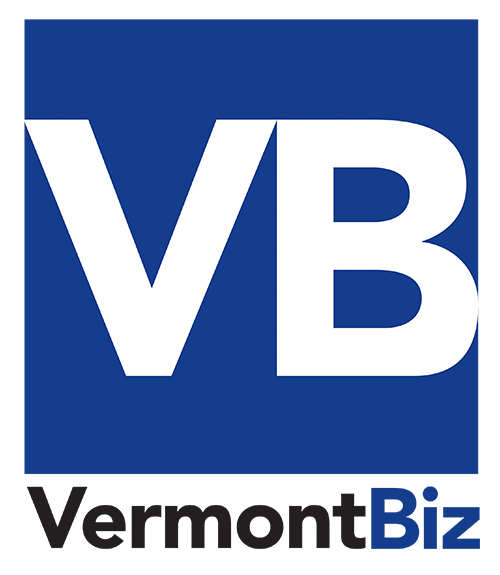Goddard College to close after 86 years of progressive education
Goddard College to close after 86 years of progressive education Vermont Biz


Decades Long Declining Enrollment Forces Closure
Vermont Business Magazine
The Board of Trustees of Goddard College has made the difficult decision to close the institution due to a significant and persistent decline in enrollment since the 1970s. This decision was reached unanimously by the Board, as the college is facing financial insolvency. The closure will take effect at the end of the current semester.
Background
Goddard College, established in 1938, has been known for its innovative approach to education. Over the past eight decades, it has been a leader in educational experimentation, fostering creativity, critical thinking, and social consciousness. The college’s contributions to educational innovation have been recognized nationwide, with many institutions adopting its advancements in areas such as student work programs, adult education, student portfolios, and individualized learning.
Sustainable Development Goals (SDGs)
- Goal 4: Quality Education
- Goal 10: Reduced Inequalities
- Goal 17: Partnerships for the Goals
The closure of Goddard College is a significant loss for students seeking alternative and progressive higher education. The decision was not made lightly or hastily by the Board of Trustees. Despite numerous efforts over the years to put the college on a sustainable economic path, inflationary pressures, demographic shifts, and changing educational preferences have led to a decline in enrollment. This trend is not unique to Goddard College but is seen in many higher education institutions in Vermont and across the nation.
Currently, Goddard College serves only 220 students, a significant decrease from over 1,900 students in the early 1970s.
Continuing the Legacy
Although Goddard College will be closing, its legacy will live on through its alumni, current students, faculty, and staff. In partnership with Prescott College, Goddard students will have the opportunity to continue their education and complete their degrees at the same tuition rate. To assist with the transition, a Goddard College Scholarship Fund will be established. Additional partner institutions will also be announced in the coming months.
“We are committed to ensuring that Goddard students continue to have access to a high-quality education and thrive academically,” said Dr. Barbara Morris, President of Prescott College. “Prescott College shares Goddard’s commitment to progressive education, and we are honored to welcome Goddard students into our community.”
Smooth Transition for Faculty and Staff
Goddard College is dedicated to facilitating a smooth transition for its faculty and staff. The college administration will work closely with Dr. Morris to explore employment opportunities for Goddard faculty at Prescott College. Additionally, Cabot Creamery, a long-time partner of Goddard College, will host a job fair specifically for Goddard staff in the coming months.
Closure Details
Goddard College will officially close at the end of this semester. The college will not be accepting new admissions for the 2024-2025 academic year.
“While we are closing the College with heavy hearts, this is not the end of Goddard’s impact on the world,” said President Dan Hocoy. “As generations of our alumni have done before, I know today’s students will carry Goddard’s remarkable legacy into the world in countless ways.”
Source: 4.9.2024. Plainfield, Vt., – Goddard College. For updates, please visit goddard.edu.
SDGs, Targets, and Indicators Analysis
1. Which SDGs are addressed or connected to the issues highlighted in the article?
- SDG 4: Quality Education
- SDG 8: Decent Work and Economic Growth
- SDG 10: Reduced Inequalities
The article discusses the closure of Goddard College due to financial insolvency and declining enrollment. This directly relates to SDG 4, which focuses on ensuring inclusive and equitable quality education and promoting lifelong learning opportunities for all. The closure of the college impacts students’ access to alternative, progressive higher education.
Additionally, the article mentions the inflationary pressures, demographic shifts, and changing educational preferences that contributed to the closure. These factors are connected to SDG 8, which aims to promote sustained, inclusive, and sustainable economic growth, full and productive employment, and decent work for all.
Furthermore, the decline in enrollment and closure of Goddard College reflects a trend seen in numerous higher education institutions across Vermont and the nation. This highlights the issue of reduced inequalities (SDG 10) in terms of access to higher education and opportunities for students.
2. What specific targets under those SDGs can be identified based on the article’s content?
- Target 4.3: By 2030, ensure equal access for all women and men to affordable and quality technical, vocational, and tertiary education, including university.
- Target 8.2: Achieve higher levels of economic productivity through diversification, technological upgrading, and innovation.
- Target 10.3: Ensure equal opportunity and reduce inequalities of outcome, including by eliminating discriminatory laws, policies, and practices and promoting appropriate legislation, policies, and action in this regard.
Based on the article’s content, the specific targets that can be identified are as follows:
Under SDG 4, Target 4.3 is relevant as it emphasizes equal access to affordable and quality tertiary education. The closure of Goddard College limits the availability of alternative, progressive higher education options for students, impacting their access to quality education.
Under SDG 8, Target 8.2 is applicable as it focuses on achieving higher levels of economic productivity through diversification, technological upgrading, and innovation. The closure of Goddard College reflects the challenges faced by higher education institutions in adapting to changing educational preferences and demographic shifts, which are necessary for economic growth and innovation.
Under SDG 10, Target 10.3 is relevant as it aims to reduce inequalities of outcome by eliminating discriminatory laws, policies, and practices. The closure of Goddard College highlights the issue of reduced access to higher education opportunities, potentially contributing to inequalities in educational attainment.
3. Are there any indicators mentioned or implied in the article that can be used to measure progress towards the identified targets?
Yes, there are indicators mentioned or implied in the article that can be used to measure progress towards the identified targets:
For Target 4.3:
– Enrollment numbers and trends in tertiary education institutions.
– Affordability of tertiary education for students.
– Availability and accessibility of alternative, progressive higher education options.
For Target 8.2:
– Economic productivity levels of higher education institutions.
– Adoption of technological advancements and innovative approaches in education.
– Ability of institutions to adapt to changing educational preferences and demographic shifts.
For Target 10.3:
– Enrollment rates and access to higher education for different demographic groups.
– Existence of discriminatory laws, policies, and practices in the education sector.
– Efforts to promote equal opportunity and reduce inequalities in educational outcomes.
4. SDGs, Targets, and Indicators Table
| SDGs | Targets | Indicators |
|---|---|---|
| SDG 4: Quality Education | Target 4.3: By 2030, ensure equal access for all women and men to affordable and quality technical, vocational, and tertiary education, including university. |
|
| SDG 8: Decent Work and Economic Growth | Target 8.2: Achieve higher levels of economic productivity through diversification, technological upgrading, and innovation. |
|
| SDG 10: Reduced Inequalities | Target 10.3: Ensure equal opportunity and reduce inequalities of outcome, including by eliminating discriminatory laws, policies, and practices and promoting appropriate legislation, policies, and action in this regard. |
|
Behold! This splendid article springs forth from the wellspring of knowledge, shaped by a wondrous proprietary AI technology that delved into a vast ocean of data, illuminating the path towards the Sustainable Development Goals. Remember that all rights are reserved by SDG Investors LLC, empowering us to champion progress together.
Source: vermontbiz.com

Join us, as fellow seekers of change, on a transformative journey at https://sdgtalks.ai/welcome, where you can become a member and actively contribute to shaping a brighter future.








